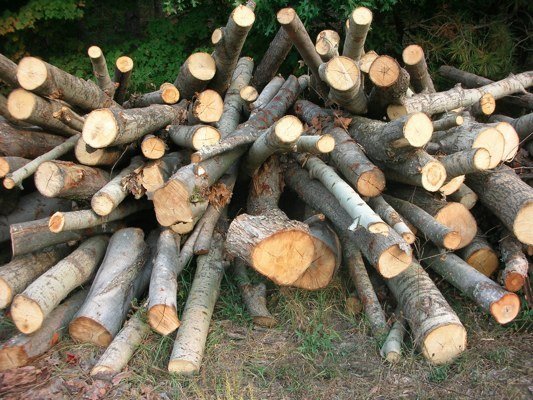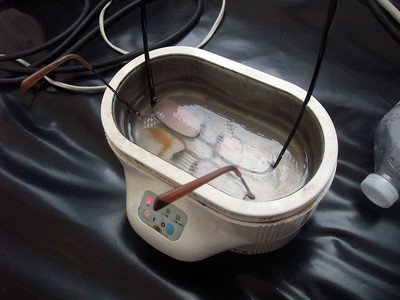When you’re staring at a pile of logs, wondering which will keep you warm through the cold months, the question often arises: is poplar a right choice of firewood?
At first glance, poplar might seem like an underdog in the world of firewood, often overlooked in favor of the more traditional oak or maple. But before you dismiss it outright, let’s delve deeply into this versatile and somewhat misunderstood wood. Whether you’re a seasoned wood burner or a curious novice, poplar deserves a thoughtful exploration.
The Basics of Poplar: A Quick Introduction
Poplar is a deciduous tree commonly found in North America, Europe, and Asia. Its species include yellow poplar (also called tulip poplar), cottonwood, and aspen. Known for its rapid growth, poplar serves various purposes, from construction and furniture making to paper production. Its light and airy nature make it easy to work with in industrial applications, but how does it fare when tossed into the fireplace or wood stove? Let’s uncover the details that matter most when considering poplar as firewood.
First Impressions: Easy to Split, Easy to Dry

If you’ve ever split wood, you’ll appreciate poplar’s willingness to cooperate. Unlike the gnarly, knotty tangles of elm or hickory, poplar splits cleanly and effortlessly. There’s a certain satisfaction in working with a wood that doesn’t fight back. For those who process their firewood manually, poplar can feel like a breath of fresh air.
And when it comes to seasoning, poplar is relatively quick to dry. In just six to twelve months, you can have a well-seasoned pile ready to burn. This short seasoning time is a boon for those who might find themselves behind schedule or in need of firewood in a pinch. Compared to the multi-year wait for oak, poplar feels like an efficient, no-nonsense option.
The Heat Factor: Not a Heavy Hitter, but Worth Considering
Here’s where poplar’s reputation takes a hit: its heat output. Measured in British Thermal Units (BTUs), poplar produces around 13-14 million BTUs per cord, compared to oak’s robust 24-25 million BTUs. To put it in everyday terms, poplar burns hot but not for long. It’s like the friend who shows up early to the party, brings a lot of energy, and then quietly exits before the night gets going.
Does this make poplar a poor choice? Not necessarily. For quick, efficient heat on a mild evening or to start a fire that’ll later be fed with denser logs, poplar does the job beautifully. Think of it as the kindling’s older sibling—capable of kicking things off with flair but not built for the long haul. It’s also excellent for warming up a chilly space quickly, especially when you don’t need a fire to last all night.
Burning Characteristics: Clean, Quick, and Reliable
One of poplar’s best traits is its clean burn. It produces minimal smoke and sparking, which makes it a decent option for indoor fireplaces and wood stoves. If you’ve ever dealt with a smoky, crackling fire that fills the room with haze, you’ll appreciate poplar’s more refined burning characteristics.
However, its light density means it burns quickly, requiring frequent tending. If you’re someone who enjoys the ritual of tending a fire—adding logs, poking the embers, and savoring the warmth—poplar might suit your style. For those who find peace in the act of fire maintenance, poplar can provide a rewarding experience. On the other hand, if you prefer a more “set it and forget it” approach, poplar might leave you wanting. Its quick consumption means you’ll need a larger stash to get through the season compared to denser woods like cherry or ash.
Sustainability: A Tree With Benefits
One of poplar’s greatest strengths lies in its sustainability. It grows quickly and thrives in various environments, making it an eco-friendly option. If you’re managing your own woodlot or buying locally sourced firewood, choosing poplar can help support responsible forestry practices. Its rapid growth means it replenishes faster than slower-growing hardwoods, making it a more renewable choice. In an era where environmental consciousness is crucial, poplar stands out as a wood that respects the balance of nature.
Additionally, poplar’s fast-growing nature allows it to be planted and harvested in shorter cycles. This can be especially beneficial for those cultivating woodlots for personal or community use. Knowing you’re using a resource that’s both effective and sustainable can add a layer of satisfaction to every fire you light.
Practical Scenarios: When Poplar Shines
Poplar may not win the “Best All-Around Firewood” award, but it has its moments in the spotlight. Here are a few scenarios where poplar truly excels:
- Shoulder Seasons: In the fall and spring, when you need a bit of warmth but not a roaring fire, poplar is perfect. Its quick heat output and ease of use make it ideal for these transitional periods. You won’t feel like you’re wasting premium firewood on a mild evening.
- Starter Wood: Pair poplar with denser woods to get your fire going. It catches fire quickly and creates a strong base of coals for the heavy hitters. This makes it a valuable addition to any woodpile.
- Emergency Supplies: If you’re ever caught without a seasoned woodpile, poplar’s short drying time can be a lifesaver. Knowing you can prepare it in a relatively short span gives it an edge over slower-drying woods.
The Emotional Connection: Why Poplar Has a Place
There’s something comforting about a crackling fire, no matter the wood you burn. Poplar might not be the flashiest option, but it’s dependable, accessible, and unpretentious. It’s the wood that quietly does its job, warming your home and your spirit without making a fuss. For those of us who appreciate the simple pleasures in life, poplar has a unique charm.
Sitting by a poplar-fueled fire brings its own kind of magic. The light, fast-burning logs create a dynamic and lively blaze. There’s a sense of intimacy in tending a fire that needs attention, as if the flames and you are in a quiet conversation. Each log added feels like a small act of care, a rhythm that connects you to the primal essence of warmth and light.
So, is poplar good firewood? The answer depends on your needs and expectations. If you’re looking for a wood that’s easy to handle, burns cleanly, and is perfect for mild heating, poplar fits the bill. However, if you’re after long-lasting, high-intensity heat for the coldest winter nights, you might want to pair poplar with a denser wood.
In the end, firewood isn’t just about BTUs or burn times. It’s about the memories made around the hearth—the laughter, the quiet moments, the stories shared. Poplar, with all its quirks and qualities, contributes to those moments in its own way. It reminds us that not every fire needs to be a blazing inferno to be meaningful. Sometimes, the gentler, fleeting warmth is all you need.
So go ahead, give poplar a try. You might just find that this humble wood becomes a surprising favorite, offering more than you expected in both utility and experience.



